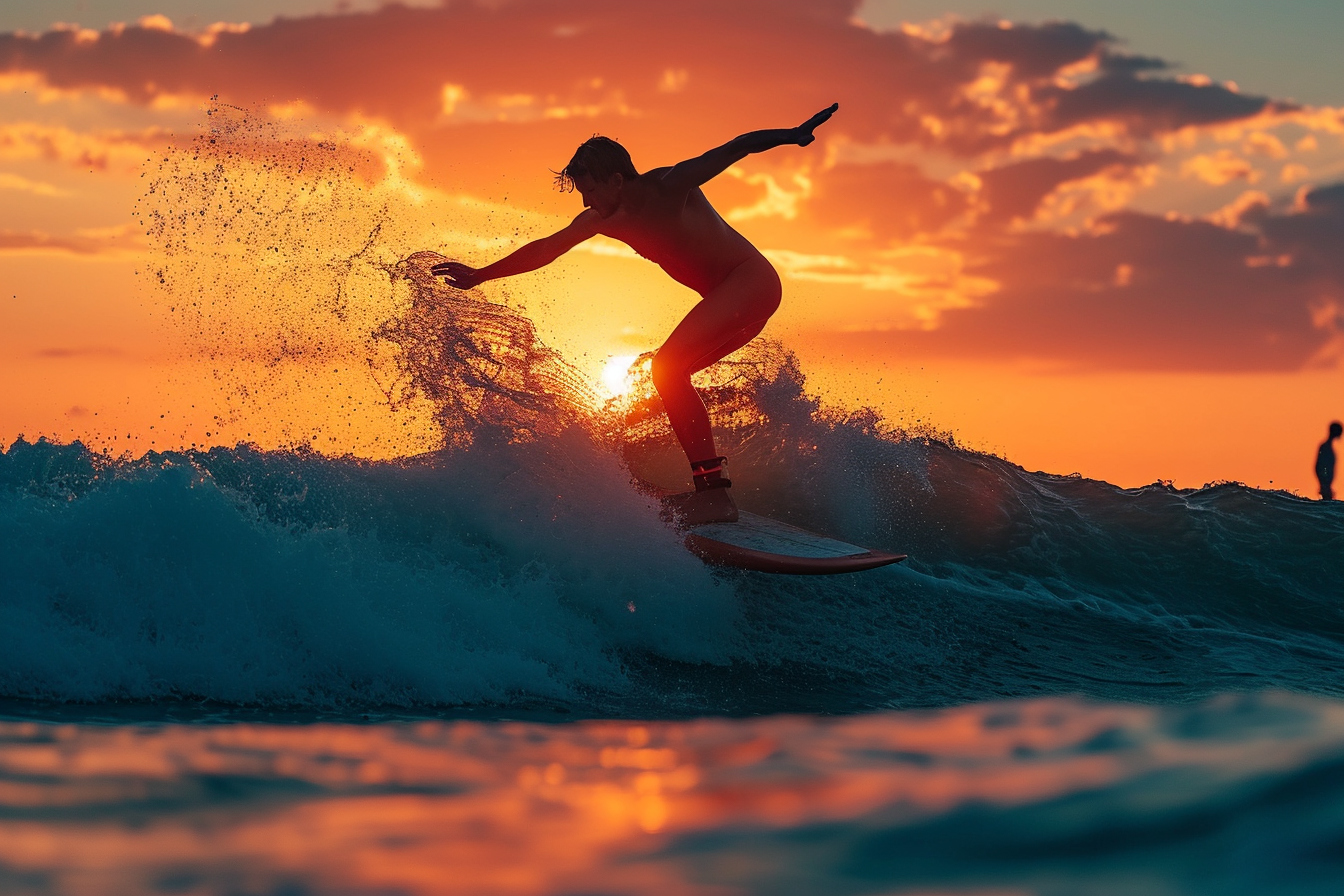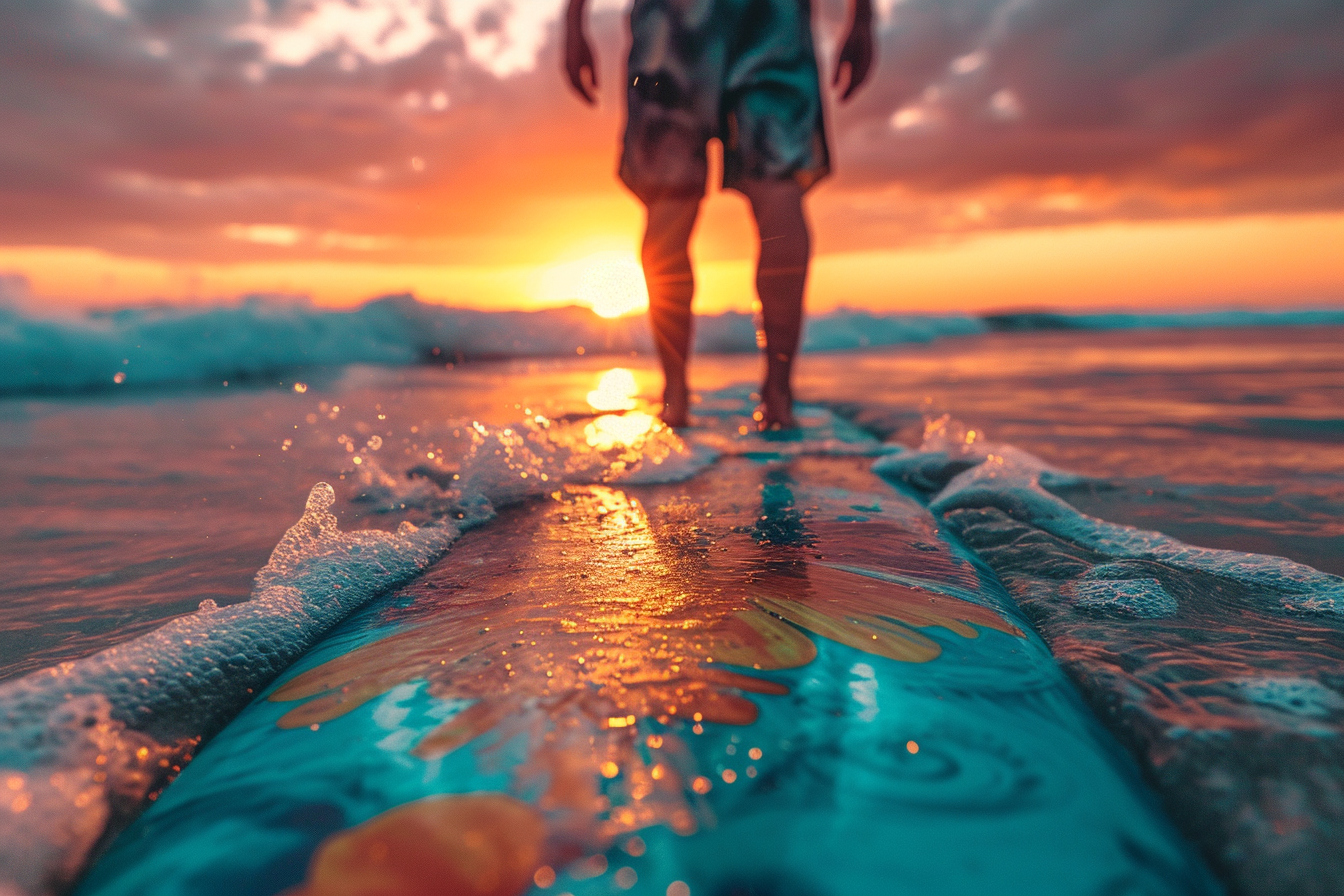Skimboarding is a thrilling watersport that bridges the gap between surfing and skateboarding. The sport involves gliding across the water’s surface on a flat board to ride incoming waves back to shore, or to perform a range of tricks on the shoreline’s thin film of water. For beginners eager to join the world of skimboarding, mastering the fundamentals is essential to success and enjoyment in this dynamic activity.
Skimboarding equipment
Choosing the right skimboard
Before riding the waves, selecting an appropriate skimboard is fundamental. There are various types of boards available based on the rider’s weight, height, and skill level. Most beginner boards are made from wood, which is both affordable and durable, making it ideal for newcomers to practice and hone their skills. As proficiency develops, many gravitate towards lighter and more responsive fiberglass or carbon fiber boards.
When choosing a board, consider size and shape. For instance, a larger board will provide more floatation and stability, which is beneficial when learning the basics. Meanwhile, the shape affects how the board will perform on the waves. Some boards have pointed noses, tailored for wave riding, and others have more rounded noses suitable for flatland tricks.
Wax and traction pads
Maintaining a firm grip on the board is crucial. Skimboard wax or traction pads can be applied to achieve this. The wax is rubbed onto the board to prevent slipping, similar to surfboards. Traction pads offer the same result with the added benefit of providing a cushioned area for your feet.
Getting started with skimboarding
Understanding your environment
Knowledge of the skimboarding environment is just as essential as physical preparation. Studying the beach and the waves provides insight into the best spots for skimboarding. Favorable conditions typically include a smooth shoreline with a thin layer of water and consistent, small waves. It is also vital to be aware of and respect local wildlife and environmental regulations.
Safety precautions
Safety is paramount. Wearing the proper gear, such as a good quality rashguard and board shorts, not only provides comfort but also protection from the sun and sand. Additionally, consider a helmet and impact vest for added safety, especially in areas with rocky shorelines or during rough wave conditions. Always check the weather and wave forecasts and avoid skimboarding during dangerous conditions.
Skimboarding techniques
Board control
Controlling the board is a skill that requires time and practice. Start by practicing on the sand, away from the water, to get a feel for the board. The stance is similar to that of skateboarding; with feet positioned shoulder-width apart and knees slightly bent.
Basic maneuvers
The one-step drop
The one-step drop technique is fundamental in skimboarding. This involves holding the board out, taking a step forward, and dropping the board onto the shallow water while keeping it parallel with the surface. Timing and placement are crucial as the board must be released smoothly onto the water to maintain glide.
Board mounting
After mastering the drop, learn to mount the board by taking a smooth step onto the board’s back, followed by placing the front foot on. Coordination and balance are essential here to prevent falls and ensure a seamless transition onto the board.
Turning and carving
Turning and carving come next and are executed by shifting your weight and adjusting your body position. Leaning into the turn will carve the board into a smooth arc, and with practice, these maneuvers will become fluid and controlled.
Riding waves
The ultimate goal of many skimboarders is riding waves. Begin by selecting small, white-water waves before progressing to more significant, unbroken ones. Position yourself so that you glide out to meet the wave as it breaks near the shoreline before turning sharply and riding it back to the beach.
Advanced skimboarding techniques

360 degrees turn
The 360 degrees turn, or ‘spin’, is a fundamental trick in skimboarding. It’s completed by rotating your body and board in a full circle while gliding along the water. This maneuver requires a deft touch and proper weight distribution to avoid losing speed and sinking.
Ollies and shuv-its
For a more skateboarding-inspired experience, tricks like ollies and shuv-its are the next step. These involve popping the board off the water and spinning it beneath your feet. These tricks demand precision and timing, and mastering them opens the door to more complex and rewarding maneuvers.
Reading the waves
Wave dynamics
Understanding wave dynamics is an integral part of advancing in skimboarding. Each wave carries its own set of characteristics – size, shape, speed, and the angle of approach all matter. By learning to read these features, you can anticipate the wave’s behavior and adjust your strategy accordingly.
Positioning for wave riding
Positioning is about choosing the right wave and launching at the right moment. Watch for waves that offer the best shape for a long, smooth ride and time your launch to match the wave’s pace as it rolls towards the shore.
Physical conditioning and balance

Strength and endurance
Physical fitness plays a significant role in skimboarding success. Building strength and endurance enables longer sessions on the water and better control over the board. Exercises like squats, lunges, and core workouts are beneficial for building the necessary muscles.
Balance training
Balance is another pivotal aspect. Activities like yoga or using a balance board can dramatically improve your ability to stay upright and maneuver the skimboard. The better your balance, the more control you’ll have, especially when executing advanced maneuvers or riding waves.
Practice and patience
Practice is the cornerstone of skimboarding. No wave, turn, or trick can be conquered without repetition and commitment. Each session helps build muscle memory and improve technique.
Analyzing mistakes
A critical but often overlooked component of practicing is analyzing and learning from mistakes. Understanding why a fall occurred or why a wave wasn’t caught is crucial to improvement. Video analysis can be a powerful tool in this regard, providing the ability to review and adjust your form and decision-making.
Seeking advice and community
Engaging with the skimboarding community and seeking advice from seasoned riders accelerates the learning curve. Local clubs, online forums, and professional courses offer a wealth of knowledge and camaraderie. Learning from others’ experiences and insights can prove invaluable.
Consistency and environment diversification
Remaining consistent in practice and exposing yourself to various environmental conditions refines your adaptability and skills. Challenge yourself by tackling different beaches, waves, and weather conditions. This variety ensures a well-rounded skill set and prepares you for any situation you might encounter on the water.
Environmental awareness and ethics
Respect for the beach and marine life
If the beach sustains us as skimboarders, it’s our duty to protect and respect it. Beyond enjoying the sport, being conscious of our impact on the environment and marine life ensures the sustainability of skimboarding for future generations. Adopt practices such as leaving no trash behind, being cautious around marine wildlife, and advocating for the preservation of our beaches.
Engagement in beach cleanups
Participating in or organizing beach cleanups is a constructive way to give back to the community and contribute to environmental preservation. It also represents a prime opportunity to bond with fellow skimboarders and reinforce the collective responsibility towards our skimboarding arenas.
Mastering the waves through skimboarding is a dynamic and gratifying pursuit. From the initial choice of equipment to the advanced mastery of wave riding, each step builds upon the last, creating a rich and profound journey along this fascinating watersport’s spectrum. The path to skimboarding proficiency is laden with challenges and opportunities for growth. With dedication, practice, and an unwavering commitment to learning, newcomers to the skimboarding community can look forward to mastering the shoreline and waves with confidence and style. The adventure is just beginning, and the waves are calling.